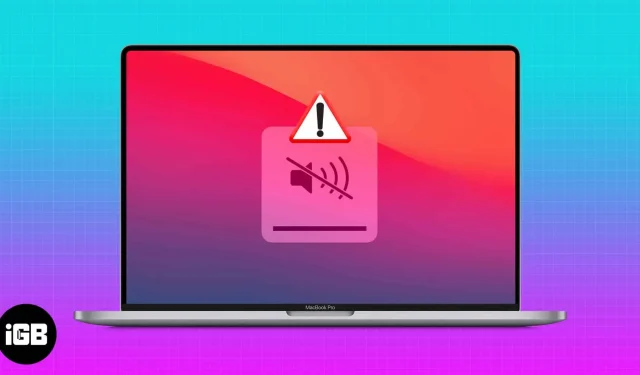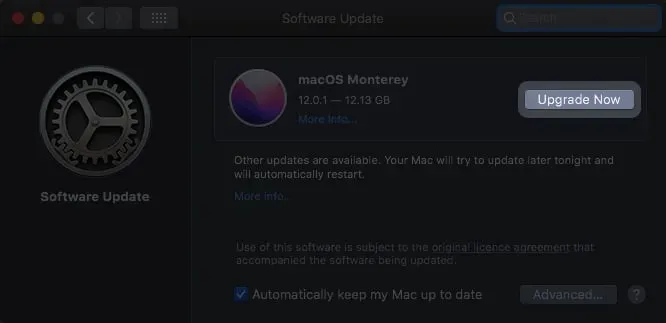How to Fix Not Working Sound Problem on MacBook

So, after a busy day, you finally settled on watching a movie or listening to music on your Mac. But you will find yourself staring at your Mac’s screen without hearing anything, even after turning on all the volume keys. Your Mac’s audio output won’t just work! I know how you feel; upset.
Check out these quick nifty fixes and fix the broken sound issue on your Mac. Tired of a busy day? Don’t worry, you can take a nap and come back to this article for a quick fix later.
- Check volume buttons
- Speak to Siri to Check Mac Speakers
- Play Random Music Files on Mac
- Disable external speakers or headphones
- Choose the right audio device on Mac
- Make sure an individual macOS app isn’t disabled
- Disconnect and reconnect your external audio device
- Reset your Mac’s primary audio interface
- Restart your Mac
- Reset your Mac’s NVRAM
- Update your macOS
- Restart your sound controller
- Contact Apple Support
While it sounds absurd, you may have mistakenly turned your Mac’s control button all the way down. Mistakes happen. Turn up the volume buttons while playing sound on your computer.
To do this, click the Sound icon in your Mac’s Control Center. Then turn the slider up if it’s down.
2. Talk to Siri to check your Mac’s speakers.
One of the best ways to check your Mac’s built-in speakers is to talk to Siri. However, before testing with Siri, make sure you disconnect any external audio device from your Mac as it uses system audio by default.
Performing this test is easy if you have enabled Siri on your Mac before.
Say something like, “Hey Siri, how are you?”If Siri responds clearly, your Mac’s sound hardware is fine. And it could be a software issue.
3. Play Random Music Files on Mac
Some songs have poor sound quality. And worse, they may not play on your Mac. Also, some music files may not be compatible with your Mac. In this case, they may not play sound.
To fix this problem, start by playing random music files on your Mac to see if the sound works. You can also stream songs online to be sure.
If other songs than the one you are trying to play work, you can delete and re-download this music file. Then play it again to see if it works. Otherwise, your macOS may not support this file format.
4. Turn off your external speakers or headphones.
External speakers connected to your Mac may be broken or connected incorrectly, blocking sound output from your computer. This may make you think that your Mac’s audio output is faulty when it isn’t.
Disconnect them from your Mac to check if the problem is with external speakers. Then play any song or movie to see if the embedded audio is working. Don’t conclude yet that the sound in the system is broken. There are a few more things to check.
5. Choose the right audio device on Mac
Audio may not work on your Mac if you have selected the wrong audio device in System Preferences. And it happens to most people by mistake. This applies if you are trying to use external audio devices such as speakers or headphones.
To check and select the correct audio device on Mac:
- Click the Apple logo → System Preferences.
- Go to sound.
- Go to conclusion.
- Select the connected audio device from the list. Tip: Make sure the mute icon is disabled.
6. Make sure an individual macOS app isn’t disabled
Most applications, including games, have dedicated volume controls. Therefore, if the sound does not work when you try to play a game or play a movie or song from an application, it may be disabled.
In this case, you will not hear any sound. So before moving on to the next tech fixes, make sure you turn up the volume in the app-specific settings.
If your Mac audio is still not working after testing the audio output as instructed above, it’s time to move on to more technical solutions. But don’t worry, it’s easy.
7. Disconnect and reconnect the external audio device.
This solution is applicable if your Mac’s audio output only stops working when an external audio device is connected.
The interface between a connected external audio device and your Mac can be dizzying due to several factors. Disconnecting and reconnecting the external audio device often helps. You also want to resolve Bluetooth device connection issues if you are using Bluetooth audio devices.
As a final step, you can use a soft brush to clean the speaker or headphone jack and USB ports of any debris. Reconnect your external audio device to see if it works.
8. Reset Mac Primary Audio Interface
Mac Audio Core is an Application Programming Interface (API) that controls audio output from within your Mac’s applications. Therefore, developers use it to encode the audio components of Mac mashups. As expected, if it breaks or starts glitching, it will prevent apps from outputting sound.
However, you cannot tell if he is guilty. But simply resetting master audio via your Mac’s CLI works for most people.
To reset the Mac’s main audio API, open a Mac terminal and type:
sudo killall coreaudiod
9. Restart your Mac
Software issues, including RAM, can cause the audio unit to freeze, preventing it from working properly. Most users say that restarting the computer solves the audio output issue. Also, restarting your Mac gives it a fresh start and cleans up clogged RAM.
Click the Apple logo and then Restart to restart your Mac. Try playing the sound on your Mac to see if that solves the problem this time.
10. Reset your Mac’s NVRAM
NVRAM stands for Non-Volatile Random Access Memory. This is the memory that stores your Mac’s settings for easy access. This memory uses a dedicated CMOS battery that keeps it running even if you turn off your Mac. This helps the Mac restore previous settings when the system boots.
If it stops working or crashes, it can affect major parts of your Mac’s settings, including sound settings. Luckily, resetting NVRAM is easy. It helps to restart this block of memory and return it to the previous settings.
11. Update macOS

Outdated macOS can break many features. Even if an outdated macOS doesn’t directly disrupt audio, it can prevent certain apps on your Mac from working properly. This may affect built-in features such as the system volume in the app. The solution is simple; update macOS. Then try playing the song or movie to see if your Mac’s sound works this time.
12. Restart your sound controller
If you’ve tried all of the above fixes and no peripherals are connected to your Mac, then it’s time to restart your sound controller.
To do this, go to “Activity Monitoring”→ enter coreaudiod. Click on an activity and exit it. Once you do this, the sound controller will restart on its own.
13. Contact Apple Support
If all else fails, it’s time to contact Apple Support. Talking to an Apple agent can help resolve the audio output issue as it will help you better understand what is wrong with your Mac.
This can be frustrating if your Mac’s audio isn’t working. You have invested so much and you deserve the best it can give. But audio glitches do happen, even on the best Macs. I’ve highlighted easy-to-follow guides for fixing audio output issues on your Mac. It may only require a few settings to work.
Have you fixed your Mac’s audio output? Let me know what worked for you in the comments section below.
Leave a Reply